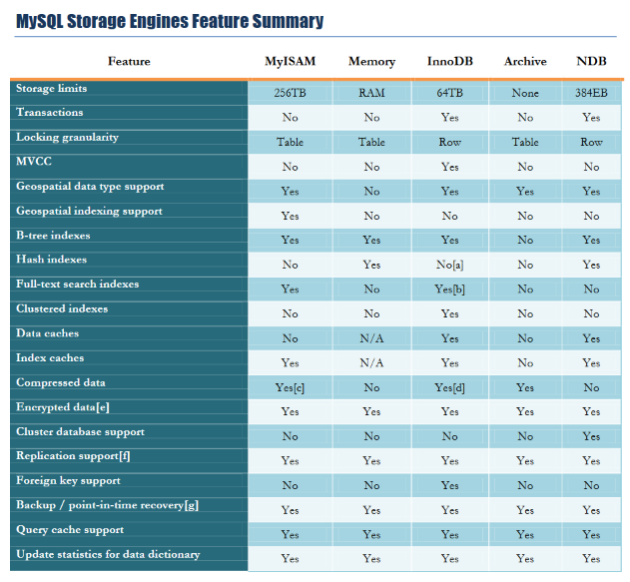Subqueries, this blog contains copy and pasting.
https://dev.mysql.com/doc/refman/5.5/en/subqueries.html
Subqueries are like joins, where you have a query within a query. Typically a select
SELECT * FROM t1 WHERE column1 = (SELECT column1 FROM t2);
Allows to isolate queries, and altenatve ways to peform joins.
DELETE FROM t1
WHERE s11 > ANY
(SELECT COUNT(*) /* no hint */ FROM t2
WHERE NOT EXISTS
(SELECT * FROM t3
WHERE ROW(5*t2.s1,77)=
(SELECT 50,11*s1 FROM t4 UNION SELECT 50,77 FROM
(SELECT * FROM t5) AS t5)));
In MySQL, you cannot modify a table and select from the same table in a subquery. This applies to statements such as DELETE, INSERT, REPLACE, UPDATE, and (because subqueries can be used in the SET clause) LOAD DATA INFILE.
https://dev.mysql.com/doc/refman/5.7/en/scalar-subqueries.html
Result of a subquery has to be a single value, not a row or more.
Simple scalar query,
CREATE TABLE t1 (s1 INT, s2 CHAR(5) NOT NULL);INSERT INTO t1 VALUES(100, ‘abcde’);SELECT (SELECT s2 FROM t1);
Producing a single result abcde.
Suppose that we make two tables:
CREATE TABLE t1 (s1 INT);INSERT INTO t1 VALUES (1);CREATE TABLE t2 (s1 INT);INSERT INTO t2 VALUES (2);
Then perform a SELECT:
SELECT (SELECT s1 FROM t2) FROM t1;
The result is 2 because there is a row in t2 containing a column s1 that has a value of 2.
A scalar subquery can be part of an expression, but remember the parentheses, even if the subquery is an operand that provides an argument for a function. For example:
SELECT UPPER((SELECT s1 FROM t1)) FROM t2;
The most common use of a subquery is in the form:
non_subquery_operand comparison_operator (subquery)
Where comparison_operator is one of these operators:
= > < >= <= <> != <=>
For example:
… WHERE ‘a’ = (SELECT column1 FROM t1)
MySQL also permits this construct:
non_subquery_operand LIKE (subquery)
At one time the only legal place for a subquery was on the right side of a comparison, and you might still find some old DBMSs that insist on this.
Here is an example of a common-form subquery comparison that you cannot do with a join. It finds all the rows in table t1 for which the column1 value is equal to a maximum value in table t2:
SELECT * FROM t1 WHERE column1 = (SELECT MAX(column2) FROM t2);
Here is another example, which again is impossible with a join because it involves aggregating for one of the tables. It finds all rows in table t1 containing a value that occurs twice in a given column:
SELECT * FROM t1 AS t WHERE 2 = (SELECT COUNT(*) FROM t1 WHERE t1.id = t.id);
For a comparison of the subquery to a scalar, the subquery must return a scalar. For a comparison of the subquery to a row constructor, the subquery must be a row subquery that returns a row with the same number of values as the row constructor.
The ANY keyword, which must follow a comparison operator, means “return TRUE if the comparison is TRUE for ANY of the values in the column that the subquery returns.” For example:
SELECT s1 FROM t1 WHERE s1 > ANY (SELECT s1 FROM t2);
Suppose that there is a row in table t1 containing (10). The expression is TRUE if table t2 contains (21,14,7) because there is a value 7 in t2 that is less than 10. The expression is FALSE if table t2 contains (20,10), or if table t2 is empty. The expression is unknown (that is, NULL) if table t2 contains (NULL,NULL,NULL).
SELECT s1 FROM t1 WHERE s1 = ANY (SELECT s1 FROM t2);SELECT s1 FROM t1 WHERE s1 IN (SELECT s1 FROM t2);
IN and = ANY are not synonyms when used with an expression list. IN can take an expression list, but = ANY cannot.
SELECT s1 FROM t1 WHERE s1 > ALL (SELECT s1 FROM t2);
Suppose that there is a row in table t1 containing (10). The expression is TRUE if table t2 contains (-5,0,+5) because 10 is greater than all three values in t2. The expression is FALSE if table t2 contains (12,6,NULL,-100) because there is a single value 12 in table t2 that is greater than 10. The expression is unknown (that is, NULL) if table t2 contains (0,NULL,1).
What kind of store is present in one or more cities?
SELECT DISTINCT store_type FROM stores
WHERE EXISTS (SELECT * FROM cities_stores
WHERE cities_stores.store_type = stores.store_type);
What kind of store is present in no cities?
SELECT DISTINCT store_type FROM stores
WHERE NOT EXISTS (SELECT * FROM cities_stores
WHERE cities_stores.store_type = stores.store_type);
What kind of store is present in all cities?
SELECT DISTINCT store_type FROM stores s1
WHERE NOT EXISTS (
SELECT * FROM cities WHERE NOT EXISTS (
SELECT * FROM cities_stores
WHERE cities_stores.city = cities.city
AND cities_stores.store_type = stores.store_type));
Queries can be rewritten as joins if necessary.
For example, this query:
SELECT * FROM t1 WHERE id IN (SELECT id FROM t2);
Can be rewritten as:
SELECT DISTINCT t1.* FROM t1, t2 WHERE t1.id=t2.id;
The queries:
SELECT * FROM t1 WHERE id NOT IN (SELECT id FROM t2);SELECT * FROM t1 WHERE NOT EXISTS (SELECT id FROM t2 WHERE t1.id=t2.id);
Can be rewritten as:
SELECT table1.* FROM table1 LEFT JOIN table2 ON table1.id=table2.id WHERE table2.id IS NULL;
